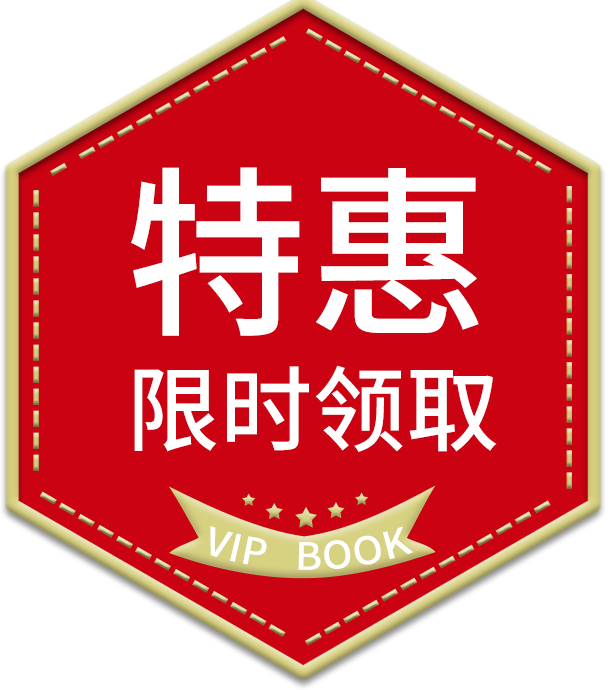编辑推荐
看板管理实践:提高软件开发效率
内容简介
《看板方法:科技企业渐进变革成功之道》由看板方法创始人David J. Anderson亲自编写,是看板方法的奠基之作。看板方法脱胎于丰田生产方式和约束理论,是精益方法的进一步延伸。它将软件开发过程视为一种价值流,并且相信拉动式的管理能产生更好的结果。它通过限制在制品的数量等一系列简单可行的技巧,发现和缓解软件开发过程中的压力和瓶颈,提高生产效率。看板方法的奇妙之处,在于它与企业原有的开发流程无缝结合,在不知不觉中提高生产效率。换句话说,它是一种渐进式的改良,不是翻天覆地的革命,因而更容易被企业接受。实施阻力小且切实有效是看板方法在软件开发社区中迅速流行起来的原因。
作者简介
大卫·J.安德森(David J. Anderson),有三十多年IT行业从业经验,曾在多家大型跨国企业管理软件开发团队,拥有丰富的团队管理经验。他是精益软件和系统协会(Lean Software & Systems Consortium)的创始人,并且创办了David J. Anderson & Associates咨询公司和LeanKanban培训公司,致力于传播和推广精益思想和看板方法。
章节目录
版权信息
对本书的赞誉
推荐序
译序
序
第一部分 导论 Introduction
第1章 解决敏捷管理者的困境 Solving an Agile Manager’s Dilemma
1.1 我对可持续步调的探索 My Search for Sustainable Pace
1.2 我对成功变革管理的探索 My Search for Successful Change Management
1.3 从“鼓-缓冲-绳”转向“看板” From Drum-Buffer-Rope to Kanban
1.4 看板方法的出现 Emergence of the Kanban Method
1.5 看板方法被社区采纳的过程 Kanban’s Community Adoption
1.6 看板的价值是反直觉的 The Value of Kanban is Counter-Intuitive
总结
第2章 什么是看板方法 What Is the Kanban Method?
2.1 什么是看板系统? What is a Kanban System?
2.2 把看板应用于软件开发中 Kanban Applied in Software Development
2.3 为什么使用看板系统? Why Use a Kanban System?
2.4 看板方法模型 A Model for the Kanban Method
2.5 识别看板方法的应用实施 Recognizing a Kanban Method Implementation
2.6 作为权限授予者的看板 Kanban as a Permission Giver
总结
第二部分 看板方法的益处 Benefits of Kanban
第3章 一种成功秘诀 A Recipe for Success
3.1 使用秘诀 Implementing the Recipe
3.2 成功秘诀和看板方法 Recipe for Success and Kanban
总结
第4章 在五个季度内,从最差变为最好 From Worst to Best in Five Quarters
4.1 问题 The Problem
4.2 可视化工作流程 Visualize the Workflow
4.3 影响效能的因素 Factors Affecting Performance
4.4 明确过程策略 Make Process Policies Explicit
4.5 估算是一种浪费 Estimation Was a Waste
4.6 限制在制品 Limit Work-in-Progress
4.7 建立输入节奏 Establishing an Input Cadence
4.8 达成新契约 Striking a New Bargain
4.9 实施变革 Implementing Changes
4.10 调整策略 Adjusting Policies
4.11 寻求进一步的改善 Looking for Further Improvements
4.12 成果 Results
总结
第5章 持续改进的文化 A Continuous Improvement Culture
5.1 改善文化 Kaizen Culture
5.2 看板方法会加速组织成熟度和能力的提升 Kanban Accelerates Organizational Maturity and Capability
5.3 社会学变革 Sociological Change
5.4 文化变革也许是看板方法带来的最大好处 Cultural Change is Perhaps the Biggest Benefit of Kanban
总结
第三部分 实施看板方法 Implementing Kanban
第6章 价值流映射 Mapping the Value Stream
6.1 定义控制起点和终点 Defining a Start and End Point for Control
6.2 工作项类型 Work Item Types
6.3 绘制卡片墙 Drawing a Card Wall
6.4 请求分析 Demand Analysis
6.5 根据请求分配产能 Allocating Capacity According to Demand
6.6 工作项卡片详解 Anatomy of a Work Item Card
6.7 电子跟踪 Electronic Tracking
6.8 设置输入和输出边界 Setting Input and Output Boundaries
6.9 应对并行活动 Coping with Concurrency
6.10 应对次序无关的活动 Coping with Unordered Activities
总结
第7章 使用看板进行协调 Coordination with Kanban Systems
7.1 可视化控制和拉动 Visual Control and Pull
7.2 电子跟踪 Electronic Tracking
7.3 每日站立会议 Daily Standup Meetings
7.4 会后讨论 The After Meeting
7.5 队列填充会议 Queue Replenishment Meetings
7.6 发布规划会议 Release Planning Meetings
7.7 鉴别分类 Triage
7.8 问题日志的审查与升级 Issue Log Review and Escalation
7.9 现场贴纸代理 Sticky Buddies
7.10 跨多个地理位置保持同步 Synchronizing across Geographic Locations
总结
第8章 建立交付节奏 Establishing a Delivery Cadence
8.1 交付的协调成本 Coordination Costs of Delivery
8.2 交付的事务成本 Transaction Costs of Delivery
8.3 交付效率 Efficiency of Delivery
8.4 确定交付节奏 Agreeing a Delivery Cadence
8.5 通过提高效率来提升交付节奏 Improve Efficiency to Increase Delivery Cadence
8.6 进行随需或临时交付 Making On-Demand or Ad Hoc Deliveries
总结
第9章 建立输入节奏 Establishing an Input Cadence
9.1 优先级排序的协调成本 Coordination Costs of Prioritization
9.2 确定优先级排序节奏 Agreeing on a Prioritization Cadence
9.3 优先级排序的效率 Efficiency of Prioritization
9.4 优先级排序的事务成本 Transaction Costs of Prioritization
9.5 提高效率以支持更频繁的优先级排序节奏 Improve Efficiency to Increase Prioritization Cadence
9.6 进行随需或临时性的优先级排序 Making On-Demand or Ad Hoc Prioritization
总结
第10章 设置在制品限额 Setting Work-in-Progress Limits
10.1 工作任务的限额 Limits for Work Tasks
10.2 排队队列中的限额 Limits for Queues
10.3 瓶颈前的缓冲 Buffer Bottlenecks
10.4 输入队列大小 Input Queue Size
10.5 工作流中不设WIP限额的区域 Unlimited Sections of Workflow
10.6 不要使组织压力过大 Don’t Stress Your Organization
10.7 不设置在制品限额是错误的 It’s a Mistake Not to Set a WIP Limit
10.8 产能分配 Capacity Allocation
总结
第11章 建立服务水平协议 Establishing Service Level Agreements
11.1 服务类别的一种典型定义 Typical Class-of-Service Definitions
11.2 为服务类别设置规则条款 Policies for Class of Service
11.3 确定服务交付目标 Determining a Service Delivery Target
11.4 设置服务类别 Assigning a Class of Service
11.5 应用服务类别 Putting Classes of Service to Use
11.6 根据服务类别来配置产能 Allocate Capacity to Classes of Service
总结
第12章 度量和管理报告 Metrics and Management Reporting
12.1 跟踪在制品 Tracking WIP
12.2 前置时间 Lead Time
12.3 准时交付率 Due Date Performance
12.4 交付速率 Throughput
12.5 问题和受阻工作项 Issues and Blocked Work Items
12.6 流动效率 Flow Efficiency
12.7 初始质量 Initial Quality
12.8 破坏负载 Failure Load
总结
第13章 使用两层系统扩展看板 Scaling Kanban with Two-Tiered Systems
13.1 层次化的需求 Hierarchical Requirements
13.2 将价值交付和工作项的变异性解耦 Decouple Value Delivery from Work Item Variability
13.3 两层卡片墙 Two-tiered Card Walls
13.4 引入泳道 Introducing Swim Lanes
13.5 应对规模变异性的另外一种方法 Alternative Approach to Size Variability
13.6 和服务类别结合在一起 Incorporating Classes of Service
13.7 系统集成 Systems Integration
13.8 管理共享资源 Managing Shared Resources
总结
第14章 运营回顾 Operations Review
14.1 会前准备 Ante Meeting
14.2 在开始时设置好业务基调 Set a Business Tone from the Beginning
14.3 邀请嘉宾扩大听众范围并带来附加价值 Inviting Guests Broadens the Audience and Adds Value
14.4 主要议程 Main Agenda
14.5 精益转型的基础 Keystone of Lean Transition
14.6 适宜的节奏 Appropriate Cadence
14.7 体现管理者的价值 Demonstrating the Value of Managers
14.8 组织层面的专注能培育改善文化 Organizational Focus Fosters Kaizen
14.9 一个早期案例 An Earlier Example
总结
第15章 启动看板变革 Starting a Kanban Change Initiative
15.1 看板系统的首要目标 The Primary Goal for Our Kanban System
15.2 看板系统的次要目标 Secondary Goals for Our Kanban System
15.3 理解目标,阐明益处 Know the Goals and Articulate the Benefits
15.4 实施步骤 Steps to Get Started
15.5 看板方法带来新的谈判模式 Kanban Strikes a Different Type of Bargain
15.6 启动看板实施的谈判 Striking the Kanban Bargain
总结
第四部分 继续改进 Making Improvements
第16章 三类改进机会 Three Types of Improvement Opportunity
16.1 瓶颈、消除浪费和降低变异性 Bottlenecks, Waste Elimination, and Reduction of Variability
16.2 看板方法与公司文化的适配 Fitting Kanban to Your Company Culture
总结
第17章 瓶颈和非即时可用资源 Bottlenecks and Non-Instant Availability
17.1 能力受限资源 Capacity-Constrained Resources
17.2 非即时可用资源 Non-Instant Availability Resources
总结
第18章 精益的一种经济学模型 An Economic Model for Lean
18.1 重新定义“浪费” Redefining “Waste”
18.2 事务成本 Transaction Costs
18.3 协调成本 Coordination Costs
18.4 如何识别一项活动是否是成本 How Do You Know if an Activity Is a Cost?
18.5 破坏负载 Failure Load
总结
第19章 变异性的根源 Sources of Variability
19.1 变异性的内部根源 Internal Sources of Variability
19.2 变异性的外部根源 External Sources of Variability
总结
第20章 问题管理和升级策略 Issue Management and Escalation Policies
20.1 对问题的管理 Managing Issues
20.2 问题升级 Escalating Issues
20.3 问题跟踪和报告 Tracking and Reporting Issues
总结
参考文献 Endnotes
致谢 Acknowledgments
索引 Index
关于作者 About the Author
其他看板相关资源
看板方法是2014年由华中科技大学出版社出版,作者DavidJ.Anderson。
得书感谢您对《看板方法》关注和支持,如本书内容有不良信息或侵权等情形的,请联系本网站。

















